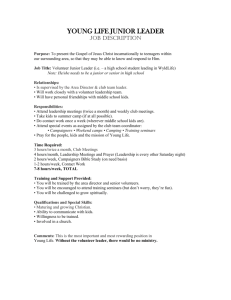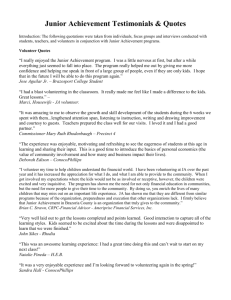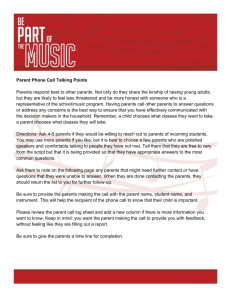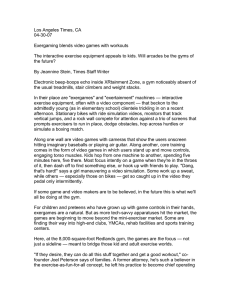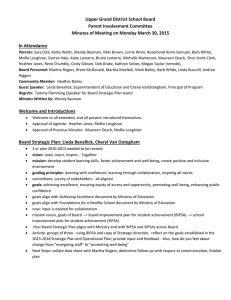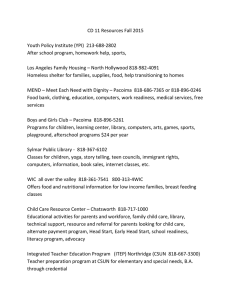Witnessing a Plane Crash Narrative – Boring vs
advertisement
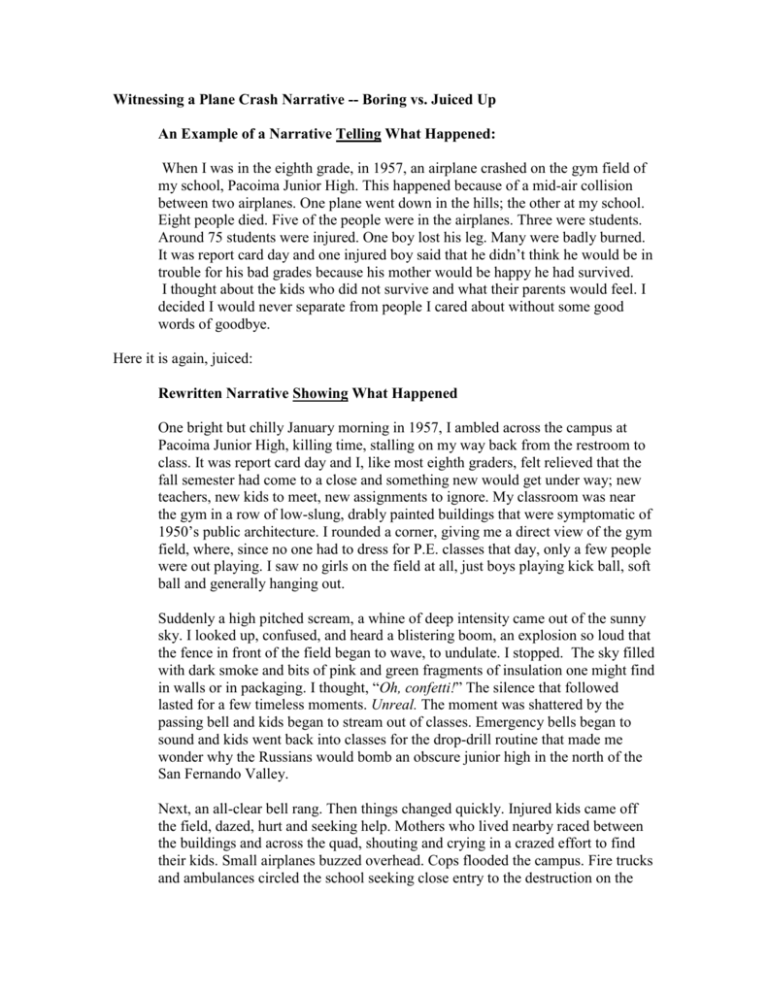
Witnessing a Plane Crash Narrative -- Boring vs. Juiced Up An Example of a Narrative Telling What Happened: When I was in the eighth grade, in 1957, an airplane crashed on the gym field of my school, Pacoima Junior High. This happened because of a mid-air collision between two airplanes. One plane went down in the hills; the other at my school. Eight people died. Five of the people were in the airplanes. Three were students. Around 75 students were injured. One boy lost his leg. Many were badly burned. It was report card day and one injured boy said that he didn’t think he would be in trouble for his bad grades because his mother would be happy he had survived. I thought about the kids who did not survive and what their parents would feel. I decided I would never separate from people I cared about without some good words of goodbye. Here it is again, juiced: Rewritten Narrative Showing What Happened One bright but chilly January morning in 1957, I ambled across the campus at Pacoima Junior High, killing time, stalling on my way back from the restroom to class. It was report card day and I, like most eighth graders, felt relieved that the fall semester had come to a close and something new would get under way; new teachers, new kids to meet, new assignments to ignore. My classroom was near the gym in a row of low-slung, drably painted buildings that were symptomatic of 1950’s public architecture. I rounded a corner, giving me a direct view of the gym field, where, since no one had to dress for P.E. classes that day, only a few people were out playing. I saw no girls on the field at all, just boys playing kick ball, soft ball and generally hanging out. Suddenly a high pitched scream, a whine of deep intensity came out of the sunny sky. I looked up, confused, and heard a blistering boom, an explosion so loud that the fence in front of the field began to wave, to undulate. I stopped. The sky filled with dark smoke and bits of pink and green fragments of insulation one might find in walls or in packaging. I thought, “Oh, confetti!” The silence that followed lasted for a few timeless moments. Unreal. The moment was shattered by the passing bell and kids began to stream out of classes. Emergency bells began to sound and kids went back into classes for the drop-drill routine that made me wonder why the Russians would bomb an obscure junior high in the north of the San Fernando Valley. Next, an all-clear bell rang. Then things changed quickly. Injured kids came off the field, dazed, hurt and seeking help. Mothers who lived nearby raced between the buildings and across the quad, shouting and crying in a crazed effort to find their kids. Small airplanes buzzed overhead. Cops flooded the campus. Fire trucks and ambulances circled the school seeking close entry to the destruction on the field. I recall being herded into the school library, relieved to find a space where an orderly mood prevailed even as parents met up with their children and students waited for instructions about what to do. One boy came in with oil and blood splattered on his clothing. He seemed unhurt. He smiled and said, “Well, I won’t get any punishment for this report card. My mom will be so happy I’m alive.” Eight people died that day. Three of them were students. Another seventy or so kids were injured. One kid on the field survived because a P.E. teacher grabbed a towel from the gym shower room and staunched the blood pouring out from his severed leg. Two boys died on the field; one died two days later in the hospital. I sat at a table in the library and remembered having breakfast with my family that morning. Did any of those dead kids have hard words with their families that morning? Did any parent fail to kiss a kid goodbye? I vowed, in that library on January 26, 1957, that I would never leave a loved one with words that, were they my last words, I would forever regret. © TeachWithMovies.com Licensed pursuant to http://www.teachwithmovies.org/terms-of-use.html





